Showing Spotlights 369 - 376 of 2839 in category All (newest first):
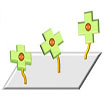 The key to fabricate single-atom catalysts is the confinement of transition metal atoms in the precursor, which remains a critical challenge. Addressing this critical challenge, researchers recently proposed clicking confinement strategy as a new synthesis methodology towards the fabrication of single-atom catalysts. This strategy breaks the restrictions on molecular size or symmetry and significantly broadens the fabrication approaches. It also is of great specificity, ensuring the precise construction of single-atom sites with unique structures or distributions.
The key to fabricate single-atom catalysts is the confinement of transition metal atoms in the precursor, which remains a critical challenge. Addressing this critical challenge, researchers recently proposed clicking confinement strategy as a new synthesis methodology towards the fabrication of single-atom catalysts. This strategy breaks the restrictions on molecular size or symmetry and significantly broadens the fabrication approaches. It also is of great specificity, ensuring the precise construction of single-atom sites with unique structures or distributions.
Mar 17th, 2022
 Since the beginning of the COVID-19 pandemic in 2020, researchers have intensified their efforts to improve the performance of antiviral and antibacterial face masks by adding various functionalities such as metal nanoparticles and herbal extracts to inactivate pathogens, using graphene to make masks photothermal and superhydrophobic, and even using triboelectric nanogenerators to prolong mask lifetime. Based on these works, manufacturers have developed different mask styles and air filtration materials using various nanomaterials.
Since the beginning of the COVID-19 pandemic in 2020, researchers have intensified their efforts to improve the performance of antiviral and antibacterial face masks by adding various functionalities such as metal nanoparticles and herbal extracts to inactivate pathogens, using graphene to make masks photothermal and superhydrophobic, and even using triboelectric nanogenerators to prolong mask lifetime. Based on these works, manufacturers have developed different mask styles and air filtration materials using various nanomaterials.
Mar 14th, 2022
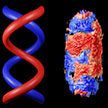 Researchers have developed a novel technique to quantify the helical morphology of gold chiral nanorods. Such nanoparticles exhibit unique properties in a sense that they can change the circular polarization of light. In many cases, these properties are believed to be caused by the helical (or 'screw-like') morphology of the nanoparticles, but until now it was very difficult to objectively analyze their shape. This methodology is the first building block towards a fundamental understanding of the chiroptical activity of nanoparticles.
Researchers have developed a novel technique to quantify the helical morphology of gold chiral nanorods. Such nanoparticles exhibit unique properties in a sense that they can change the circular polarization of light. In many cases, these properties are believed to be caused by the helical (or 'screw-like') morphology of the nanoparticles, but until now it was very difficult to objectively analyze their shape. This methodology is the first building block towards a fundamental understanding of the chiroptical activity of nanoparticles.
Mar 10th, 2022
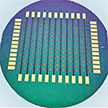 The huge variety of vdW layered 2D materials provides a large potential for advanced 2D nanoelectronics. However, for scalable applications, all vdW layered 2D materials face a common challenge: transitioning from micrometer-scale 2D flakes to wafer-scale. This is necessary for scaling up 2D vdW materials application in the high-end semiconductor industry. A new review describes the structures, properties, wafer-scale growth methods, and applications of a number of representative vdW layered 2D materials.
The huge variety of vdW layered 2D materials provides a large potential for advanced 2D nanoelectronics. However, for scalable applications, all vdW layered 2D materials face a common challenge: transitioning from micrometer-scale 2D flakes to wafer-scale. This is necessary for scaling up 2D vdW materials application in the high-end semiconductor industry. A new review describes the structures, properties, wafer-scale growth methods, and applications of a number of representative vdW layered 2D materials.
Mar 8th, 2022
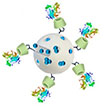 The design of chemical communication networks at the micro/nanoscale is an emergent interdisciplinary topic with potential applications in diverse areas such as sensing, biomedicine, biotechnology, and information and communication technologies. Previously, researchers have demonstrated communication between synthetic microvesicles and one type of cells. Communicating cells from different kingdoms has not been achieved before. Now, scientists report a proof-of-concept study that appears to be the first realization of a programmed cross-kingdom communication involving two species of living cells enabled by nanoparticles.
The design of chemical communication networks at the micro/nanoscale is an emergent interdisciplinary topic with potential applications in diverse areas such as sensing, biomedicine, biotechnology, and information and communication technologies. Previously, researchers have demonstrated communication between synthetic microvesicles and one type of cells. Communicating cells from different kingdoms has not been achieved before. Now, scientists report a proof-of-concept study that appears to be the first realization of a programmed cross-kingdom communication involving two species of living cells enabled by nanoparticles.
Feb 25th, 2022
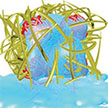 Scientists estimate that at any one instant, the Earth's atmosphere contains about 12 900 cubic kilometers of water vapor. Extracting water from the air, that is, atmospheric water harvesting(AWH), becomes a promising alternative technology to produce freshwater. Atmospheric water harvesting can be achieved through three different approaches: fog collection, dew harvesting, and sorbent-based AWH. Here is a review of the recent materials engineering-enabled water management strategies for improving AWH performance at different working conditions (i.e., saturated humidity, dew point, and unsaturated humidity).
Scientists estimate that at any one instant, the Earth's atmosphere contains about 12 900 cubic kilometers of water vapor. Extracting water from the air, that is, atmospheric water harvesting(AWH), becomes a promising alternative technology to produce freshwater. Atmospheric water harvesting can be achieved through three different approaches: fog collection, dew harvesting, and sorbent-based AWH. Here is a review of the recent materials engineering-enabled water management strategies for improving AWH performance at different working conditions (i.e., saturated humidity, dew point, and unsaturated humidity).
Feb 24th, 2022
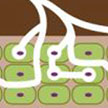 Scientists have designed a nanobot neuroprosthetic that it has been inspired from nature by way of endomyccorhizae - a type of plant/fungus symbiosis, which is over four hundred million years old. During endomyccorhizae, fungi use numerous threadlike projections called mycelium that penetrate plant roots, forming colossal underground networks with nearby root systems. During this process fungi take up vital nutrients while protecting plant roots from infections - a win-win relationship. Consequently, the nano-neuroprosthetic has been named 'endomyccorhizae ligand interface', or 'ELI' for short.
Scientists have designed a nanobot neuroprosthetic that it has been inspired from nature by way of endomyccorhizae - a type of plant/fungus symbiosis, which is over four hundred million years old. During endomyccorhizae, fungi use numerous threadlike projections called mycelium that penetrate plant roots, forming colossal underground networks with nearby root systems. During this process fungi take up vital nutrients while protecting plant roots from infections - a win-win relationship. Consequently, the nano-neuroprosthetic has been named 'endomyccorhizae ligand interface', or 'ELI' for short.
Feb 21st, 2022
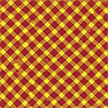 To realize the full potential of DNA nanotechnology in nanoelectronics applications requires addressing a number of scientific and engineering challenges: how to create and manipulate DNA nanostructures? How to use them for surface patterning and integrating heterogeneous materials at the nanoscale? And how to use these processes to produce electronic devices at lower cost and with better performance? These topics are the focus of a recent reviewarticle.
To realize the full potential of DNA nanotechnology in nanoelectronics applications requires addressing a number of scientific and engineering challenges: how to create and manipulate DNA nanostructures? How to use them for surface patterning and integrating heterogeneous materials at the nanoscale? And how to use these processes to produce electronic devices at lower cost and with better performance? These topics are the focus of a recent reviewarticle.
Feb 17th, 2022
 The key to fabricate single-atom catalysts is the confinement of transition metal atoms in the precursor, which remains a critical challenge. Addressing this critical challenge, researchers recently proposed clicking confinement strategy as a new synthesis methodology towards the fabrication of single-atom catalysts. This strategy breaks the restrictions on molecular size or symmetry and significantly broadens the fabrication approaches. It also is of great specificity, ensuring the precise construction of single-atom sites with unique structures or distributions.
The key to fabricate single-atom catalysts is the confinement of transition metal atoms in the precursor, which remains a critical challenge. Addressing this critical challenge, researchers recently proposed clicking confinement strategy as a new synthesis methodology towards the fabrication of single-atom catalysts. This strategy breaks the restrictions on molecular size or symmetry and significantly broadens the fabrication approaches. It also is of great specificity, ensuring the precise construction of single-atom sites with unique structures or distributions.
 Subscribe to our Nanotechnology Spotlight feed
Subscribe to our Nanotechnology Spotlight feed





